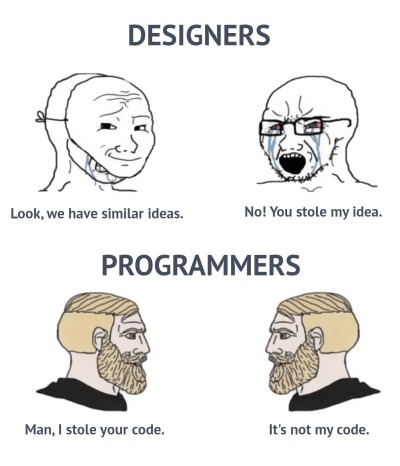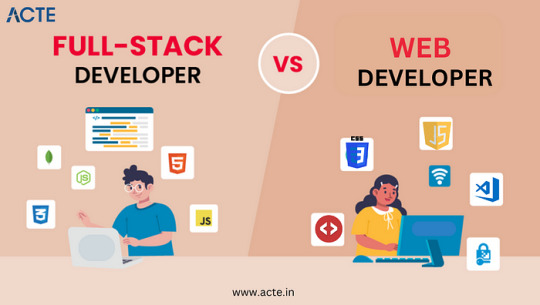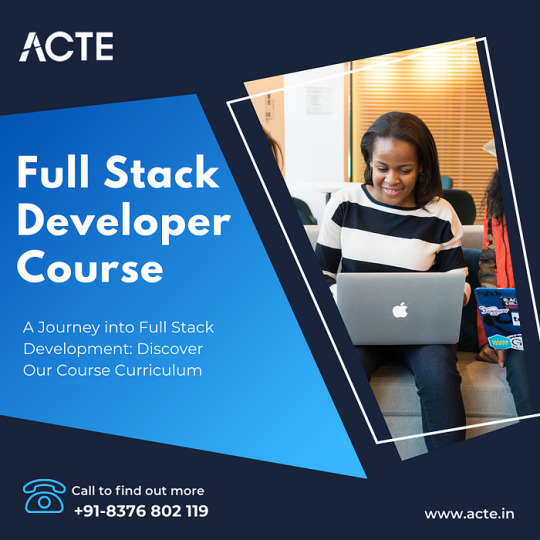#Full Stack Web Development JavaScript
Explore tagged Tumblr posts
Text

When you find out that your 'original' code is just a copy of a copy of a copy...
#programmer humor#programming#geek#nerd#programmer#computer#python#laptop#c#meme#pc#computer science#java#developer#software developers#full stack web development#code#cs#javascript#c++#software engineer#software development#dev#web development
133 notes
·
View notes
Text
Any MCR fans in software engineering/web dev?
I'm looking for mutuals who love to code and also love MCR. I wanna do a little project >:D also just want some buds to relate to.

#my chemical romance#mcr#software engineering#web development#web developers#python#c++ programming#programming#programmer#github#coding#baby coder#codeblr#react#java#javascript#reactjs#frontenddevelopment#learntocode#webdev#nodejs#full stack developer#gerard way#frank iero#my chem gerard#mikey way#ray toro
2 notes
·
View notes
Text
youtube
#online courses#coding#graphic designing#web design#ict skills#india#hindi#gujarati#english#www.ictskills.in#online training#live training#full stack course#digital marketing#ui ux design#backend#online#live courses#courses#education#computer science#engineering#java#python#php#dot net development company#spring mvc#javascript#Youtube
2 notes
·
View notes
Text

Days 128 to 129
I have worked hard on my portfolio site and added some cool animations and tool tips. I have done lots of prettying up as well. Tomorrow I'll fully implement the contact page.
#self improvement#cosmickittytalk#codeblr#csharp programming#csharp#csharp is superior#girls who code#programming#coding challenge#blazor#blazor programming#blazor website development#javascript#html css#html5 css3#htmlcoding#html5#css3#css animation examples#css#web development#website#front end development#full stack developer#coding for a year#coding#website development#website design#website animation#animated website
13 notes
·
View notes
Text
Top 10 Front-End Frameworks and Libraries for 2024
As the web development landscape continues to evolve, staying updated with the latest front-end frameworks and libraries is crucial for any developer. Whether you're a seasoned pro or just starting out, knowing which tools to use can significantly impact your productivity and the quality of your projects. In this post, we’ll explore the top 10 front-end frameworks and libraries that are set to dominate in 2024.
1. React
React remains one of the most popular front-end libraries, known for its simplicity and flexibility.
Key Features of React
Component-Based Architecture: Reusable components make development efficient and manageable.
Virtual DOM: Enhances performance by minimizing direct DOM manipulation.
Strong Community Support: A vast ecosystem of tools, libraries, and tutorials.

2. Angular
Angular, backed by Google, is a powerful framework for building dynamic single-page applications (SPAs).
Why Choose Angular?
Two-Way Data Binding: Synchronizes data between the model and the view.
Dependency Injection: Improves code maintainability and testability.
Comprehensive Documentation: Extensive resources for learning and troubleshooting.

3. Vue.js
Vue.js has gained popularity due to its gentle learning curve and versatility.
Advantages of Vue.js
Reactive Data Binding: Simplifies state management.
Single-File Components: Encapsulate HTML, CSS, and JavaScript in one file.
Flexibility: Can be used for both large-scale and small-scale applications.

4. Svelte
Svelte is a relatively new player that compiles components into highly efficient vanilla JavaScript at build time.
Svelte’s Standout Features
No Virtual DOM: Directly manipulates the DOM for better performance.
Less Boilerplate: Cleaner code with minimal overhead.
Ease of Use: Intuitive and straightforward syntax.

5. Bootstrap
Bootstrap is a front-end framework that provides pre-designed components and a responsive grid system.
Benefits of Using Bootstrap
Responsive Design: Ensures your site looks great on all devices.
Pre-Styled Components: Saves time with ready-to-use UI elements.
Customizable: Easily customize with Sass variables and Bootstrap’s extensive options.

6. Tailwind CSS
Tailwind CSS is a utility-first CSS framework that allows for rapid UI development.
Tailwind CSS Features
Utility-First Approach: Use utility classes directly in your HTML.
Customizable: Extensive configuration options to suit your project’s needs.
Consistency: Enforces a consistent design language across your project.

7. Ember.js
Ember.js is a robust framework for building ambitious web applications.
Why Ember.js Stands Out
Convention over Configuration: Reduces the amount of decision-making and boilerplate code.
Strong Routing: Powerful routing capabilities for managing application state.
Productivity: Focuses on developer productivity with built-in best practices.

8. Alpine.js
Alpine.js offers a minimal and lightweight way to add interactivity to your websites.
Key Features of Alpine.js
Lightweight: Small footprint with only a few kilobytes.
Declarative Syntax: Similar to Vue.js, making it easy to understand and implement.
Ease of Integration: Can be easily integrated into existing projects.

9. Next.js
Next.js is a popular React framework that enables server-side rendering and static site generation.
Benefits of Using Next.js
Server-Side Rendering (SSR): Improves performance and SEO by rendering pages on the server.
Static Site Generation (SSG): Pre-renders pages at build time for fast load times.
API Routes: Allows you to create API endpoints within your application.

10. Lit
Lit is a simple library for building fast, lightweight web components.
Advantages of Lit
Web Components: Embraces the web components standard for reusable, encapsulated HTML elements.
Performance: Lightweight and highly performant.
Simple API: Easy to learn and use with a minimal API surface.

Conclusion
Choosing the right front-end framework or library can significantly impact your workflow and the quality of your projects. Whether you prefer the flexibility of React, the structure of Angular, or the simplicity of Svelte, there's a tool out there to suit your needs.
Final Tips for Selecting a Framework or Library
Project Requirements: Consider the specific needs of your project.
Community and Support: Look for frameworks with strong community support and documentation.
Learning Curve: Choose a tool that matches your current skill level and the time you have available to learn.
By staying informed about the latest tools and trends, you can ensure that your skills remain relevant and that you can deliver the best possible results in your projects. Happy coding!
Remember, the best tool is the one that helps you get the job done efficiently and effectively. So, dive into these frameworks and libraries, and take your front-end development skills to the next level!
Share Your Thoughts
I'm curious to know your thoughts on these front-end frameworks and libraries. Have you used any of them in your projects? Which one is your favorite, and why? Share your experiences and insights in the comments below.👇
2 notes
·
View notes
Text


I haven't been able to work on my dress up games or cursed ads because I had to learn contentful for freelancing...tbh just learn some php (or twig) and do wordpress. The contentful docs are horrible, no examples, it is impossible to find anything specific in them, no templates if you are not paying premium...I just hate this trend of programmers reinventing things that already work just to be javascript, it ends up being so clunky and unfinished 90% of the time...let's make learning more than one programming language normal again 😭 especially for full stack projects...
#codeblr#progblr#studyblr#coding#webdevelopment#contentful#programming#full stack web development#cms#cmsdevelopment#javascript#nextjs
3 notes
·
View notes
Text
My Perspective on Distinguishing Between Full Stack Developers and Web Developers
I can’t help but go back to my own experience as a web developer as I sit down to write about the difference between full stack developers and web developers. This subject has a special meaning to me since it captures the essence of navigating this fast-paced industry. In order to better appreciate the contrasts between these two jobs, let’s set out on a voyage, and I’ll share my viewpoint and experiences along the way.
We frequently mix the terms “full stack developer” and “web developer” while discussing web development. They stand for several jobs, each with their own set of tasks and abilities. Whether you’re an experienced developer, a newcomer in the industry, or someone pursuing a career in technology, it’s vital to comprehend these contrasts.
Defining Full Stack Developers and Web Developers
Developers who work on the complete stack: Let’s start by defining a full stack developer. In terms of web development, a full stack developer is essentially a jack of all crafts. Both front-end and back-end technologies are familiar to them. This implies that they are capable of managing databases and server-side functionality in addition to designing the user interface. They are essentially the Swiss Army tools of web development.
Web Developers: known as front-end developers — concentrate mostly on the client side of web development. They are masters in using HTML, CSS, and JavaScript to create stunning and engaging user interfaces. Their main objective is to provide a smooth and visually pleasing user experience on a website.

I had a basic comprehension of these jobs when I first started working as a web developer. Like many novices, I mistakenly believed that web programming was solely about producing visually stunning websites. But I quickly understood there was much more to it.
Common Ground: Overlapping Skills
It’s important to acknowledge the areas of overlap between web developers and full stack developers before we get into their distinctions. A solid foundation in front-end development is necessary for both professions. HTML, CSS, and JavaScript proficiency are essential. These languages are your building blocks whether you’re creating a user interface or incorporating sophisticated capabilities.
These front-end abilities were the start of my adventure. I devoted endless hours to polishing my HTML structures, honing my CSS stylesheets, and exploring JavaScript’s potential as an interactive language. These abilities laid the foundation for my profession and are still crucial today.
Delving into Full Stack Development
Let’s now explore full stack development, where the distinctions are more apparent. In addition to being experts in front-end technologies, full stack developers are also knowledgeable in back-end technologies. This covers database management as well as server-side programming languages like Python, Ruby, or Node.js.
Making the switch to back-end development was a turning point for me. Working with databases and server logic first made me feel uneasy. I took the challenge, though, and began studying server-side languages and databases. Even if things weren’t always easy, every challenge I overcame helped me become a better developer.
Web Development: Focusing on the Front End
Web developers, on the other hand, focus on the front end. Their area of expertise is designing captivating, engaging user interfaces. They take great care in website design, making sure that it is aesthetically pleasing, responsive, and user-friendly.
I still clearly recall my first front-end-focused web programming project. Making an interactive and practical design come to life was thrilling. Web developers enjoy the particular high of witnessing a beautifully designed website in use.
Bridging the Gap: The Versatility of Full Stack Developers
The capacity to integrate front-end and back-end development is one of the defining traits of full stack engineers. This adaptability is revolutionary in the tech sector. Full stack developers are able to handle all aspects of development, taking a project from inception to conclusion.
Being a full stack developer has provided me with access to a variety of projects. I’ve had the honor of working on anything from data-driven applications to e-commerce websites. This versatility has improved my skill set and given me the ability to take on a variety of difficulties.
My Personal Journey
I can’t help but thank the mentors, classes, and resources that have molded my perspective as I consider my career as a developer. Participating in coding groups, taking full stack developer courses provided by ACTE Institute, and learning from seasoned developers have all been extremely beneficial to my development.

Realizing that no one becomes a full stack developer or web developer over night is essential. It is a path of ongoing learning and development. And keep in mind that each person’s journey is distinctive, formed by their experiences and decisions.
The Ever-Changing Tech Landscape
The only thing that is consistent in the tech sector is change. Both web developers and full stack developers need to keep up with the latest trends and technology. Adaptability is essential, from the emergence of new programming languages to the development of front-end frameworks.
I’ve seen firsthand how quickly tools and techniques for web development have advanced. In this always changing sector, adapting to change and remaining curious have been essential.
In conclusion, anyone navigating the IT sector needs to be aware of the differences between full stack engineers and web developers. Each role has its own advantages and difficulties. Remember that your path as a developer is an ongoing discovery whether you decide to focus on one or embrace the variety of the other.
#full stack developer#web development#full stack web development#frameworks#education#information#technology#front end development#back end#javascript
2 notes
·
View notes
Text

Accelerate your tech career with the Full Stack Development Course by MindCoders, designed to equip you with complete front-end and back-end development skills. Whether you're a beginner or looking to upskill, this course covers everything from HTML, CSS, JavaScript, React (front end) to Node.js, Express, and MongoDB (back end) – the complete MERN stack. With hands-on projects, expert mentorship, and a focus on real-world application, you’ll gain the confidence to build and deploy full-fledged web applications. At MindCoders, we prepare you for high-demand tech roles with industry-relevant training and placement support. Join our Full Stack Development Course today and transform into a job-ready developer!
#Full stack development course MindCoders#web development training in Indore#MERN stack course#full stack course with placement#JavaScript and React course#Node.js training#best coding institute#learn full stack development.
0 notes
Text

Full Stack Development Course by MindCoders – Become a Job-Ready Web Developer
Accelerate your tech career with the Full Stack Development Course by MindCoders, designed to equip you with complete front-end and back-end development skills. Whether you're a beginner or looking to upskill, this course covers everything from HTML, CSS, JavaScript, React (front end) to Node.js, Express, and MongoDB (back end) – the complete MERN stack. With hands-on projects, expert mentorship, and a focus on real-world application, you’ll gain the confidence to build and deploy full-fledged web applications. At MindCoders, we prepare you for high-demand tech roles with industry-relevant training and placement support. Join our Full Stack Development Course today and transform into a job-ready developer!
#Full stack development course MindCoders#web development training in Indore#MERN stack course#full stack course with placement#JavaScript and React course#Node.js training#best coding institute#learn full stack development.
0 notes
Text
India’s Best Student Learning Platform for Tech Skills
My Growth Crafter is a dedicated student learning platform offering curated content, interactive courses, and career-oriented mentorship. Join a community focused on future-ready skills and hands-on learning.

#MERN full-stack development workshop#learn full-stack web development#MongoDB Express React Node training#front-end and back-end coding#JavaScript development course
0 notes
Text
Full Stack Java is one of the most sought-after skills in the IT business. This course will walk you through front-end and back-end programming with Java technology. You'll learn how to create dynamic web applications, manage databases, and create reliable APIs. Our Full Stack Java Training in KPHB includes vital tools like as Core Java, Advanced Java, Spring Boot, Hibernate, RESTful APIs, Angular, and SQL. You will also acquire practical experience working on real-time projects to improve your coding skills.
By the end of the course, you will be capable of creating scalable and high-performance applications. You will also learn about deployment methodologies, cloud integration, and DevOps fundamentals, making you job-ready. Learn software skills from actual experts in live classes with or without videos, whichever works best for you.
📢 New Batch Announcement! 🚀 Upcoming Tech Training Programs with Guarantee Placement Assistance ✅Placement Assistance Program on JAVA @ 11:00 AM (IST) From 8th May 2025 click the below link to Register
#javascript#programming#javaprogramming#java course#coding#java training institute#full stack developer#full stack java training#full stack course#full stack training#full stack web development
0 notes
Text
Dockit Migrator: Effortless SharePoint Migration Solution

Introduction
Many users find Moving SharePoint data between platforms a major and complex operation. SharePoint Online (Office 365) and SharePoint version updates require complicated, time-intensive procedures. During the process, a large number of data items, custom workflows, and permissions need to be correctly transferred.
Dockit Migrator provides the ideal solution for many different use case scenarios. The features of this tool aim to simplify SharePoint migration and related processes while reducing time and workload. Vyapin also offers other similar solutions at an affordable price. Dockit Migrator manages all migration sizes from small to large enterprise operations without introducing unwanted complexities.
What is Dockit Migrator?
Dockit Migrator provides users a solution to transfer content between different SharePoint environments containing documents and lists with additional information between various SharePoint deployments. Dockit Migrator serves as a tool to transfer data between local File Shares, SharePoint deployments and SharePoint Online platform (Microsoft 365) and helps users to move between different SharePoint versions (like when users upgrade from SharePoint 2016 to SharePoint 2019).
Dockit Migrator provides an easy-to-use user interface that allows even migration staff without much technical background to move SharePoint content with ease. Through its intuitive interface, users can handle complex migration processes that will otherwise take longer times to complete, thanks to Dockit Migrator's advanced functions and features.
Why Choose Dockit Migrator?
Many organizations, such as those in Healthcare, Legal and Manufacturing, rely on SharePoint Migration tools like the Dockit Migrator for their SharePoint migration because of its numerous powerful features. The main features of Dockit Migrator include the following:
1. Dockit Migrator Moves All Content along With their Permission
Dockit Migrator serves as a complete file transfer solution that handles documents along with other associated elements. The software enables the complete movement of SharePoint sites alongside their lists and libraries together with metadata and permission elements. The functionality of the Dockit Migrator includes the correct transfer of all content along with custom workflows and user settings.
2. Before Migration Occurs: Perform an Ahead-of-Time Success Evaluation
The pre-migration assessment from Dockit Migrator runs its tests before any migration procedures begin. Dockit Migrator performs a pre-migration evaluation that uncovers potential issues that could affect the migration process later on. Using this tool enables you to prevent unexpected outcomes during the migration process by ensuring it completes without difficulties.
3. Incremental Migration to save time
Mass data transfers usually take up extensive amounts of time when performed in a single operation. Dockit Migrator allows incremental data migrations that transfer only changed or selected content and updated metadata during successive phases of the migration process. The feature enables you to move only the essential data so you can cut down on lengthy migrations.
4. Easy to Use, Even for Non-Experts
Dockit Migrator simplifies the process of migrating complex SharePoint data assortments. Dockit Migrator delivers an interface that allows users without technical expertise to handle their migration process. The wizard takes you step-by-step through the process smoothly. Even without SharePoint expertise, you can easily execute the migration work. Vyapin Software's Dockit Migrator simplifies the process of migrating complex SharePoint data assortments, making it accessible for all users.
5. The Software Preserves Both Permission Structures and other Security configuration details Throughout Your Migration Process
The most challenging aspect of any SharePoint migration tool or its processes involves preserving user permission structures together with other security configurations. With its secure permission and security settings migration technique, Dockit Migrator ensures smooth transition to your new SharePoint environment. Users can maintain content accessibility throughout the migration with no disruptions.
7. Supports Multiple SharePoint Versions
In addition to SharePoint 2007 and 2013, the product supports migration to versions 2016, 2019, and SharePoint Online. The product boasts excellent versatility to suit businesses that handle SharePoint data movement between various SharePoint platforms.
The user-friendly features of Dockit Migrator provide efficiency in your daily or routine SharePoint migration activities while remaining a non-disruptive process for your organization. Your SharePoint migration process becomes effortless with Dockit Migrator, which provides a robust solution that manages complete content movement along with security configurations and role permissions.
Your SharePoint migration benefits from Dockit Migrator's user-friendly design, which includes pre-migration analyses along with step-by-step document transfer options to streamline your process and minimize problems encountered in typical projects.

Conclusion
With Dockit Migrator, the process of moving SharePoint content remains straightforward and uncomplicated. This SharePoint Migration tool from Vyapin provides extensive functionality, alongside a user-friendly UI and reliable customer support for your SharePoint Online migration projects.
To conclude, Vyapin and its SharePoint Migration tool enable you to concentrate on business objectives because it manages complex migration scenarios. Your migration process will also become more efficient using DocKIT migrator’s SharePoint migration planning features, which reduces the overall time and effort in the whole process.
#Technology#Tech News#Latest Tech#Future Tech#Innovation#Tech Trends#Digital Transformation#Software Development#Programming#Coding#Web Development#App Development#Frontend#Backend#Full Stack#JavaScript#Python#AI Development#Gadgets#Smartphones#Wearables#Smart Home#Tech Reviews#Device Comparison#Artificial Intelligence#Machine Learning#Robotics#Blockchain#Augmented Reality#Virtual Reality
1 note
·
View note
Text

Master Web Development & Programming – Build Websites Like a Pro!
Learn Web Development & Programming and kickstart your journey in the tech world! This course covers everything from front-end design to back-end development, equipping you with the latest industry-relevant skills needed to build dynamic and responsive websites.
📌 What You’ll Learn: ✅ HTML, CSS & JavaScript – The foundation of web development ✅ React & Angular – Modern front-end frameworks for dynamic websites ✅ PHP & Node.js – Back-end technologies to power web applications ✅ Database Management – MySQL & MongoDB for efficient data handling ✅ API Integration – Connect and enhance web functionality ✅ Web Security & Performance Optimization – Ensure fast & secure websites
💡 Why Learn Web Development? ✔️ High-demand skill with great career opportunities ✔️ Build websites, web apps, and e-commerce platforms ✔️ Work as a freelancer or with top IT companies
Visit Attitude Academy
📚 Learn web development & programming: Attitude Academy
📍 Visit Us: Yamuna Vihar | Uttam Nagar
📞 Call:
Yamuna Vihar +91 9654382235 | Uttam Nagar +91 9205122267
🌐 Website: www.attitudetallyacademy.com
📩 Email: [email protected]
📸 Follow us on: attitudeacademy4u
#web development course#programming course#learn web development#full-stack development#front-end development#back-end development#HTML CSS JavaScript#React JS#Node.js#PHP programming#web development skills#SEO-friendly websites#MySQL database
0 notes
Text
#full stack development course with placements#mern stack development course in pune#software development#web development#rest api#reactjs#frontenddevelopment#learn to code#javascript#frontend developer#webdesign#htmlcoding#htmltemplate#html css#html#css#code#html5games#jquery#nodejs#expressjs
2 notes
·
View notes
Text
The Web Developer Bootcamp 2025 - Free Course
Course Content
Introduction to Web Development
Building Web Pages with HTML5 & CSS3
JavaScript Basics & Advanced Concepts
Back-End Development with Node.js
Database Management with MongoDB
Building Full-Stack Web Applications
Deploying Projects to the Web
Join Now
#Web Development#Full-Stack Development#Udemy Course#Web Developer Bootcamp#Free Web Development Course#Learn HTML & CSS#JavaScript Basics#Node.js#MongoDB#Web Development Training#Free Online Course#Build Web Applications#Back-End Development#Front-End Development#Enroll Now#Programming Course#Beginner Web Development#Web Development Certification#Learn to Code#Web Development Bootcamp 2025#Free Coding Course
0 notes
Text
What is full stack web development institute in indore
What is Full Stack Software Development? Java & Python Full Stack Developer Guide.
Assuming you're searching for establishments in Indore that offer Java Full Stack Web Improvement preparing, there are a few rumored associations giving thorough courses. These courses regularly cover front-end, back-end, data sets, and sending abilities required for Java-based full stack improvement.
What is java full stack web development institute in indore.
Full Stack Development in site piece implies the most widely recognized approach to making both the front-end (client-side) and back-end (server-side) of a web application. A full stack engineer in Indore, or somewhere else, is fit in dealing with all layers of progress, including informational indexes, server arrangement, APIs, and UI plan.
Portions of Full Stack Improvement
1. Full Stack Front End Developer:
Bases on the visual and instinctive pieces of a site or application.
Progressions:
HTML:- Development of the pages.
CSS:- Styling and plan.
JavaScript:- Instinct and dynamic approach to acting.
Frameworks/Libraries:- React.js, Exact, Vue.js, etc.
2. Backend Full Stack Development:
- Deals with the server, data base, and application reasoning.
- Headways:
-Server-side languages:- Node.js, Python (Django, Carafe), PHP, Ruby, Java, etc.
-Databases:- MySQL, PostgreSQL, MongoDB, etc.
-APIs:- Tranquil or GraphQL for correspondence between the front-end and back-end.
3. Database Management:
- Ensures data limit and recuperation are secure and capable.
- Model instruments:- SQL, MongoDB, Firebase.
4. Version Control Systems:
- Instruments like Git and stages like GitHub or GitLab for participation and code the board.
5. Deployment and Hosting:
- Directing servers and sending the application using stages like AWS, Heroku, Netlify, or Vercel.
#educación#educate yourselves#educate yourself#education#educhums#learning#career#c & c++#java#paython#mern stack#full stack#mern & full stack#mern stack development#mern stack course#web development#htmlcoding#html css#javascript#learn to code#css
1 note
·
View note